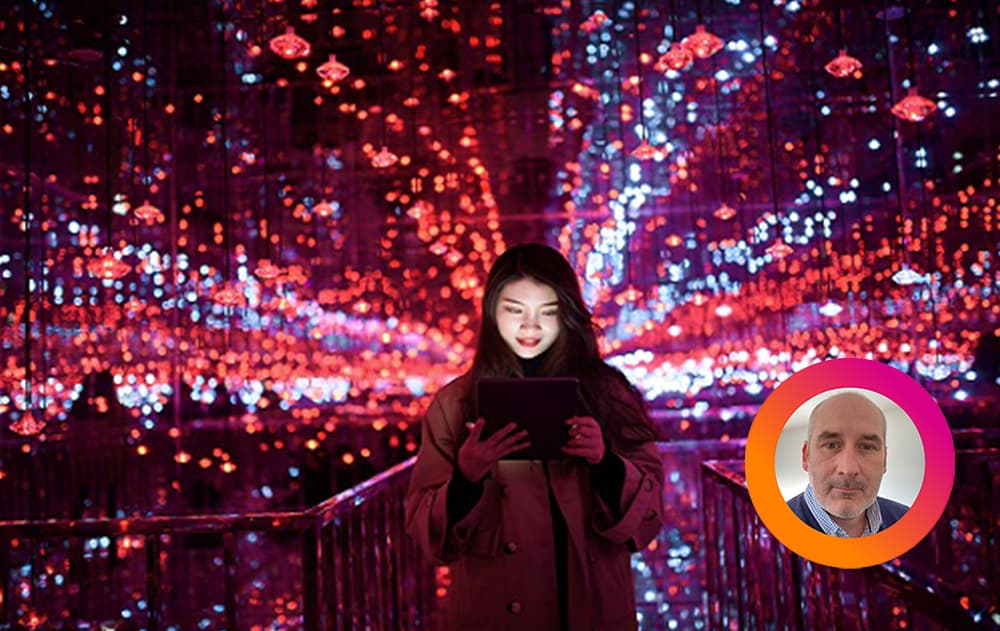With digital skills at a premium, we can’t afford to exclude 15% of the population from contributing to, or benefiting from the Digital Revolution
In today's fast-paced world, diversity and inclusion have become integral elements of a progressive society. It is not merely a moral obligation but also a strategic advantage for organizations to harness the unique talents of individuals from all walks of life, including those with diverse conditions. Assistive Technology (AT) has emerged as a game-changer in this regard, offering innovative solutions to create more inclusive workplaces.
Some individuals with disabilities have also experienced unexpected positives from COVID19, and working from home has provided people with disabilities the opportunity to create more accommodating and comfortable work environments. It has not only increased accessibility but also promoted inclusivity and allowed individuals to focus on their abilities and contributions, rather than the limitations imposed by traditional office settings. Remote work has undoubtedly played a pivotal role in advancing workplace inclusion for individuals with disabilities. This blog explores how AT and Curative Workplaces can unlock the unique talents of people with diverse conditions, fostering a more inclusive work environment.
Social, Legislative and Economic Factors Driving Use of Assistive Technology
AT has evolved significantly over recent years, adapting to the changing needs and expectations of users. It has also benefited from the integration of Artificial Intelligence driven solutions, development of IoT and Smart Devices, advancement in Wearable AT and focus on User Centric Design. We are also witnessing AT features built in as standard to product releases such as captioning, dictation and sign language spotlighting. To understand the impact of AT better, let's look at some of the key driving factors:
Global Prevalence of Disabilities: According to the World Health Organisation, over one billion people worldwide live with some form of disability, making up about 15% of the global population.
Employment Rates for People with Disabilities: The employment rate for people with disabilities is consistently lower than for those without. AT and good workplace design can help bridge this gap by enabling individuals to perform their job tasks effectively.
Economic Benefits: A report by the International Labour Organisation estimates that increasing the employment of people with disabilities could boost the global economy by up to 7%.
Legal Frameworks: Many countries have enacted legislation to promote the inclusion of people with disabilities in the workplace. These legal frameworks emphasise the importance of reasonable adjustment.
Innovation and Research: The AT industry is continually evolving, with ongoing research and innovation. Investments in this sector are expected to grow exponentially, driving ever more advanced and effective solutions.
The Emergence of Curated Workplaces
With the global pandemic driving a shift in how we work, employers are increasingly focusing on curating workspaces that are accessible, suiting the individual needs and preferences of their employees. With an aim to create a more productive, creative, and inclusive work environment, curated workspaces are providing elements such as more natural light, acoustic screening, plants, art, ergonomic and accessible furniture and personalised accessories.
The result of this is a work environment that not only reflects the organisations culture and values but also the diverse nature of its staff. Being beneficial to the wellbeing and performance of its employees, it is hoped that by creating welcoming, individual and accessible spaces, more workers will see the office as a place where they can excel.
The convergence of AT and curated workplaces has the potential to create more opportunities for people with disabilities in the labour market. By combining the benefits of both approaches, workers with disabilities can access the tools and personalised workplace settings that best suit their needs allowing them to perform at their true potential. Moreover, employers can benefit from the diversity of perspectives, skills, and talents that workers with disabilities can bring to their organizations.
Unlocking Unique Talents through Personalised Working Environments
Now, let's focus on how AT and Curated Workplaces can unlock the unique talents of individuals with diverse conditions.
Improved Accessibility:Enhancing accessibility in the workplace, ensuring that employees with disabilities can access digital tools, information, and physical spaces. This level playing field allows individuals to showcase their talents without the hindrance of barriers.
Enhanced Productivity:Making tasks more manageable. For example, screen readers and voice recognition software enable employees with visual impairments or motor difficulties to perform tasks efficiently. This boosts their productivity and allows them to focus on their strengths.
Inclusive Communication:Making tasks more manageable. For example, screen readers and voice recognition software enable employees with visual impairments or motor difficulties to perform tasks efficiently. This boosts their productivity and allows them to focus on their strengths.
Fostering Creativity:Diversity of thought is a catalyst for innovation. Providing a platform for employees to bring their unique perspectives to the table. This can lead to creative problem-solving and the development of new ideas and products.
Retention and Loyalty: When companies invest in inclusive workplaces, they often find that employees with disabilities are more loyal and committed which also fosters a positive work culture.
Attracting Top Talent: Inclusive workplaces become magnets for top talent. Potential employees are more likely to choose companies that demonstrate a commitment to diversity and accessibility, which ultimately strengthens the organization.
Conclusion
Inclusion of neurodiversity and disabilities benefit organizations by bringing unique skills and perspectives that can foster innovation, creative problem-solving, and enhanced empathy within the workplace. Diverse thinking styles can spur fresh ideas and new approaches. People with disabilities, facing unique challenges in daily life, develop resilience, adaptability, and strong problem-solving skills. By creating an inclusive culture, providing necessary support, and recognizing the strengths of neurodiverse and disabled individuals, organizations not only address accessibility but can also increase employee satisfaction, improve retention, and ensure long-term growth and success.
As technology advances and workplaces evolve, more opportunities will emerge for workers with disabilities and diverse conditions to participate in the economy and society. Combining both has the potential to revolutionize the way we work and interact with our surroundings. It's not just a matter of compliance with legal requirements; it's about recognizing the immense value that individuals with disabilities bring to the table and providing them with the tools they need to shine. As we move forward, the continued development of AT seamlessly integrated into on-site and remote working environments will be a driving force behind a more equitable and inclusive society.



